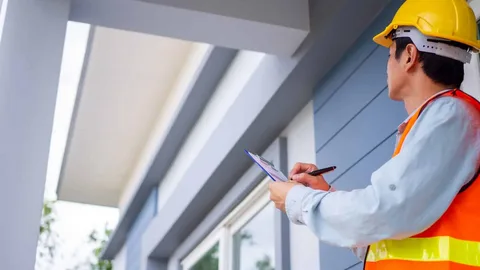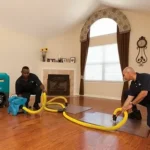Your roof is one of the most important parts of your home—it shields you from the weather, insulates your living space, and plays a major role in curb appeal and property value. Despite its durability, every roof eventually requires attention. Whether from age, weather, or poor installation, damage is inevitable. That’s where proper roof repair comes in.
Understanding when your roof needs attention, what the repair process involves, and how to choose a qualified contractor can save you thousands in the long run. This guide walks you through the essentials of roof repair so you can make informed, confident decisions about protecting your home.
Why Timely Roof Repair Matters
Even minor roofing problems can lead to serious consequences if left unaddressed. A small leak can turn into major water damage. A missing shingle may lead to insulation issues or mold growth. The longer you wait, the higher the repair costs can climb.
Here’s what happens when roof damage is ignored:
- Water infiltration that damages drywall, floors, and electrical systems
- Structural issues as roof decking or support beams rot
- Increased energy bills from compromised insulation and ventilation
- Mold and mildew growth, affecting indoor air quality and health
- Voided warranties, especially on newer roofing systems
- Decreased property value or complications during resale
Timely roof repair isn’t just a maintenance issue—it’s a way to protect your investment, safety, and peace of mind.
Common Signs You Need Roof Repair
Some roofing problems are obvious; others are more subtle. Knowing what to look for can help you catch issues early:
- Leaks or water stains on ceilings and walls
- Missing, cracked, or curled shingles
- Granules in gutters, a sign of aging asphalt shingles
- Damaged flashing around chimneys, vents, or skylights
- Sagging rooflines or dips in flat roofing sections
- Moss, algae, or mold growth on roofing surfaces
- Interior temperature fluctuations or drafts in attic spaces
Routine inspections—especially after severe weather—can help detect problems before they turn into costly repairs.
What Causes Roof Damage?
Several factors can contribute to the deterioration of a roof, including:
- Weather: Wind, hail, snow, and ice are among the top culprits, damaging shingles and exposing vulnerable areas.
- Age: Most roofing materials have a lifespan of 15–30 years. As they age, they naturally weaken and become less effective.
- Improper Installation: Poor workmanship or cutting corners during installation can lead to premature issues.
- Lack of Maintenance: Clogged gutters, unchecked moss growth, and neglect accelerate wear and tear.
- Animals: Birds, squirrels, and raccoons can cause damage by nesting or gnawing on roofing materials.
Knowing the root cause of the damage is essential for lasting roof repair—not just covering up the symptoms.
The Roof Repair Process: Step-by-Step
While the scope and cost of roof repair depend on the severity of the problem, the process generally follows a predictable path. Here’s what to expect:
1. Inspection and Assessment
A roofing professional starts by examining the roof’s condition, identifying damaged areas, checking for underlying issues, and determining the extent of the repair needed.
2. Estimate and Recommendations
You’ll receive a written estimate that outlines material costs, labor, timelines, and optional upgrades. Reputable contractors will also explain the difference between repair and replacement options if applicable.
3. Preparation and Safety Measures
Before any work begins, safety and site prep are essential. The team will set up ladders, safety harnesses, and protective coverings for your landscaping or siding.
4. Repair Work
This includes removing damaged materials, replacing or reinforcing the area, installing new shingles or tiles, resealing flashings, and addressing any water barriers or underlayment.
5. Cleanup and Final Inspection
Professional contractors clean the site thoroughly—removing old shingles, nails, and debris. A final inspection ensures that the repair meets standards and solves the identified problem.
Types of Roof Repair
Depending on the materials and style of your roof, repairs can range from simple fixes to more complex structural solutions:
- Shingle Replacement: One of the most common repairs, especially after storms or wind.
- Flashing Repairs: Ensuring water-tight seals around vents, chimneys, and valleys.
- Leak Repairs: Identifying the source of a leak and patching or resealing the area.
- Gutter and Downspout Fixes: Often overlooked, but essential for proper drainage and roof performance.
- Underlayment Repair: Damaged waterproofing layers beneath the outer materials may need replacing.
- Ventilation Repairs: Poor airflow in the attic can reduce lifespan and efficiency of the roofing system.
Each repair must be tailored to the specific issue and material used—no one-size-fits-all solution exists.
DIY vs. Professional Roof Repair
While it’s tempting to grab a ladder and fix the problem yourself, roofing is a risky and technical job that’s best left to trained professionals. Here’s why:
- Safety: Roofing work often involves heights, steep angles, and unstable surfaces.
- Proper Diagnosis: Professionals can trace hidden damage or future problem areas.
- Quality Materials: Contractors have access to high-grade materials that match your existing system.
- Warranty Protection: DIY work may void existing warranties on roofing materials or prior installations.
- Long-Term Solutions: A quick patch job might only delay a much-needed full repair.
Hiring the right team ensures the work is done right the first time.
Choosing the Right Contractor
Not all roofing professionals are created equal. Here’s how to find a reliable expert for your roof repair:
- Credentials: Look for licensing, insurance, and bonding.
- Experience: Choose a company with a solid track record in your area.
- Reviews and References: Check online reviews and ask for recent client referrals.
- Warranty and Guarantees: Quality roofers stand behind their work.
- Clear Contracts: Avoid verbal agreements—get everything in writing.
- Communication: A contractor should explain the problem and proposed solution in clear terms.
Taking the time to vet your contractor now can save headaches later.
Cost of Roof Repair
The price of roof repair varies based on factors such as:
- Type and pitch of roof
- Material (shingle, metal, tile, flat)
- Extent of the damage
- Labor rates
- Emergency or same-day services
Minor repairs may cost a few hundred dollars, while more extensive structural fixes can climb into the thousands. That said, prompt action almost always saves money compared to waiting.
When Roof Repair Isn’t Enough
Sometimes, repair may not be the best option. Here are signs it’s time to consider a full replacement:
- The roof is near or past its expected lifespan
- Recurring leaks in multiple locations
- Major structural damage or rot
- Costs of repair are close to the cost of replacement
- You want to upgrade materials or improve energy efficiency
Your roofing expert will guide you on whether repair or replacement is the smarter long-term investment.
Preventing Future Damage
Once your roof is repaired, you’ll want to keep it that way. Here’s how:
- Schedule annual inspections
- Clean gutters regularly
- Trim overhanging branches
- Remove moss or algae growth
- Address minor issues immediately
- Ensure proper attic ventilation
Preventative maintenance extends your roof’s lifespan and improves your home’s performance and safety.
Conclusion
Your roof is too important to ignore. Whether you’re dealing with a small leak or missing shingles, addressing damage early with professional roof repair services can save you time, money, and stress.Understanding the warning signs, repair process, and value of professional help empowers you to protect your home effectively. Roof issues don’t fix themselves—be proactive, choose a trusted contractor, and invest in the health of your property.


